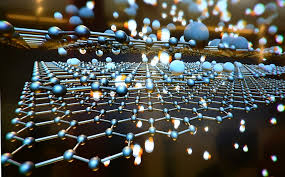
There is a novel kind of pure carbon that remains stable and has been made from "cheap feedstocks", according to researchers. Its interesting likeness to diamond and graphene, which are two other avatars of carbon, give the material some unusual characteristics.
Its special properties include being hard, as well as reflective – just like the metals that are used to make cooking utensils. What renders everyone amazed is the behaviour of the material. It is rather like ferromagnetic, permanent magnets at up to 125°C. This is definitely a first for carbon.
The team has not decided on what to call the material. Puru Jena, from the Virginia Commonwealth University in Richmond, calls it U-carbon, with U for Unusual. Therrien has decided on 'adamantia', after medieval alchemists who sought an'adamant' lodestone that could not break.
Physicist Joel Therrien of the University of Massachusetts in Lowell spelt out the amazing discovery at the International Symposium on Clusters and Nanomaterials. The finding might even pave the way for lightweight covers and coatings. Even doctors can make use of it for medical products and new electronic devices.
Published in Sciencemag, the narration apparently pumped up the excitement in the room. "Once it is published and the work has been replicated by others, it will generate a lot of interest for sure," says Qian Wang, an applied physicist at Peking University in Beijing.
Its main properties are its lightness, compared to other ferromagnetic elements such as manganese, nickel, and iron. Carbon is also nontoxic, says Qian Wang. "If it can be magnetic, it could be very useful for making biosensors or drug-delivery carriers". It could also be "magnetically interrogated or directed to diseased tissues".
Robert Whetten, a materials scientist at Northern Arizona University in Tucson, is quite confident about the finding, and says he's "actually persuaded they have something." He compared it to the suspicion of scientists in the mid-1980s, after the first "buckyball" sphere made of 60 carbon atoms was created. "There was the same degree of skepticism, despite all the evidence," he said.
So far, only some very thin films of the substance explored under electron microscopes and x-ray spectrometers have been made. "Much more characterization needs to be done," says Pulickel Ajayan of Rice University in Houston, Texas. "We are trying to be extremely careful."
No one in the team has observed any signs of impurities. They conjure, on the basis of theoretical models and the analytical information, that it is full of corrugated layers of linked carbon atoms. All of them have been heaped one on top of the other, linked through additional bonds between layers.
However, a contrarian theory has been expressed by Sumio Iijima, a nanomaterials expert at Meijo University in Nagoya, Japan. He is the pioneering expert who discovered carbon nanotubes in 1991, which is yet another carbon "allotrope." He finds the limited information in the current discovery is "not good enough". He is not assured that a new allotrope has been discovered.









